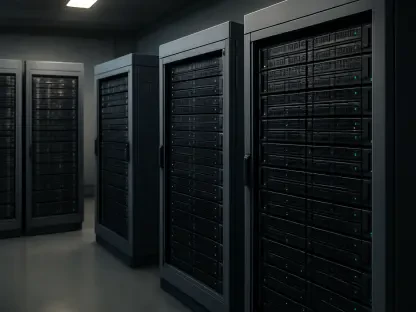I’m thrilled to sit down with Vijay Raina, a renowned expert in enterprise SaaS technology and tools, as well as a thought leader in software design and architecture. With years of experience navigating the ever-evolving tech landscape, Vijay has a unique perspective on how SaaS, cloud computing, AI, and automation are reshaping business strategies and societal dynamics. In our conversation, we dive into the confusion surrounding emerging technologies, the importance of sustainable competitive advantage, the realities of vendor-driven agendas, and the transformative potential of automation and AI. We also explore how businesses can balance innovation with cost pressures and what the future might hold for the industry. Let’s get started.
How do you see the current buzz around SaaS, cloud computing, and AI affecting businesses’ ability to grasp their actual benefits?
The buzz around these technologies has created a double-edged sword. On one hand, it’s exciting because it drives interest and adoption. On the other, it breeds confusion. Many businesses get caught up in the hype of promised cost savings and innovation without fully understanding what these tools can realistically deliver. Vendors often oversell the benefits, making it seem like SaaS or AI will solve all problems overnight. The reality is that these technologies require strategic alignment with business goals, and without that, companies can end up spending more than they save or implementing solutions that don’t fit their needs. It’s critical for businesses to cut through the noise and focus on tangible outcomes rather than marketing promises.
What are some common misunderstandings customers have about these technologies, especially when vendors pitch big savings or groundbreaking innovation?
One major misunderstanding is the idea that SaaS or cloud solutions automatically mean lower costs. Customers often don’t realize that while upfront expenses might be lower, the subscription model can become more expensive over time compared to traditional licenses. Another misconception is that AI is a plug-and-play solution for every business problem. Many think they’re “doing AI” when they’re just experimenting with basic tools, not realizing the complexity of true AI implementation. Vendors contribute to this by presenting overly simplistic narratives, which can lead to mismatched expectations and wasted investments. Businesses need to ask hard questions about long-term costs and actual use cases before jumping in.
With economic and geopolitical factors like tariffs creating uncertainty in tech pricing, how can businesses better manage costs in this unpredictable environment?
Navigating this uncertainty starts with building flexibility into IT budgets and contracts. Businesses should avoid long-term commitments with vendors that lock them into rigid pricing structures, especially when external factors like tariffs can drive costs up unexpectedly. It’s also wise to diversify technology providers and solutions to reduce dependency on a single source. Another key step is to prioritize cost transparency—understand exactly what you’re paying for and negotiate terms that allow for adjustments based on economic shifts. Finally, investing in advisory services or internal expertise can help identify areas to cut unnecessary spending and reallocate resources to high-impact areas, ensuring cost control even in turbulent times.
You’ve emphasized the need for sustainable competitive advantage in today’s cutthroat business world. What does that look like for most companies right now?
Sustainable competitive advantage today often hinges on differentiation through technology and customer experience. For many companies, it means leveraging data and tech like AI to personalize offerings or streamline operations in ways competitors can’t easily replicate. It’s not just about having the latest tools, though—it’s about using them to create unique value. For instance, a retailer might use predictive analytics to optimize inventory in a way that cuts costs and boosts customer satisfaction. It’s also about agility; companies that can pivot quickly in response to market changes or customer needs tend to stay ahead. The core is finding that “angle” that sets you apart and building a moat around it with continuous innovation.
How can businesses uncover and cultivate their unique edge to avoid being outpaced by competitors?
It starts with a deep understanding of their own strengths and customer pain points. Businesses need to conduct thorough market analysis and internal audits to identify what they do better than anyone else—whether it’s a niche product, exceptional service, or operational efficiency. From there, they should align technology investments to amplify that strength. Engaging with customers directly to understand their evolving needs can also reveal opportunities for differentiation. It’s equally important to foster a culture of experimentation; try new approaches on a small scale before full commitment. The goal is to build something competitors can’t easily copy, and that often comes from combining tech with a deep focus on what makes your business unique.
You’ve likened SaaS to renting a house versus owning one. Can you expand on why perpetual licenses might offer more value to customers in the long run?
Absolutely. With SaaS, you’re essentially paying rent indefinitely—you never own the software, and costs accumulate over time with no asset to show for it. If you stop paying, you lose access. Perpetual licenses, on the other hand, are like buying a house. Once you’ve paid for it, you own it for life, and you can use it for years without ongoing fees beyond maintenance or support. This gives businesses more control and predictability over their IT budgets. While SaaS can be great for short-term flexibility or startups, for established companies with stable needs, perpetual licenses often provide better financial value and autonomy over their tech stack in the long term.
How do aggressive vendor practices, such as forcing subscription models on existing customers, impact trust between tech providers and their clients?
These practices can severely erode trust. When vendors push subscription models or discontinue support for perpetual licenses to force upgrades, it sends a message that their priority is revenue, not customer needs. Clients start to feel trapped, like they’ve been misled about the long-term value of their initial investment. This breeds resentment and skepticism toward future promises from the same vendor or even the industry at large. Trust is built on transparency and mutual benefit, so when vendors prioritize their bottom line over client interests, it can lead to a breakdown in relationships, pushing customers to seek alternatives or third-party support to regain control over their tech decisions.
What guidance would you offer businesses to ensure they’re making tech decisions based on their own priorities rather than vendor-driven narratives?
First, always start with a clear understanding of your business objectives and challenges. Define what you need from technology before engaging with vendors, so you’re not swayed by their sales pitches. Second, do your homework—research multiple providers, compare total cost of ownership, and read the fine print on contracts to avoid hidden fees or lock-ins. Third, consider involving independent advisors who have no stake in pushing specific products; they can offer unbiased insights. Lastly, prioritize solutions that align with your long-term strategy, not just short-term trends. It’s about staying focused on value to your organization, not what’s being hyped as the next big thing.
As a leader in the industry, how has a strong focus on customer service and advisory roles shaped your approach to supporting businesses?
Customer service and advisory roles have been at the heart of everything we do. Over the years, we’ve seen that businesses don’t just want a product—they want a partner who understands their challenges and helps them navigate complex tech landscapes. By prioritizing responsive, high-quality service and acting as a trusted advisor, we’ve built long-term relationships based on trust. This means not just solving immediate issues but anticipating future needs and offering strategic guidance. Our reputation for being on the customer’s side, rather than pushing vendor agendas, has set us apart and allowed us to help companies achieve real, measurable outcomes with their technology investments.
You’ve described your role as akin to a trusted advisor or ‘consigliere’ for customers. What does that look like in day-to-day interactions with the companies you support?
In practice, being a trusted advisor means we’re deeply involved in understanding a company’s unique goals and pain points. It’s not about selling a one-size-fits-all solution but listening to their concerns—whether it’s budget constraints, innovation needs, or operational inefficiencies—and tailoring our recommendations accordingly. We provide clarity on complex tech decisions, often breaking down vendor jargon into actionable insights. We’re also proactive, reaching out with updates on industry trends or cost-saving opportunities before they ask. Essentially, we act as an extension of their team, offering unbiased advice and support 24/7 to ensure they’re always making informed choices.
Can you walk us through your methodology for helping companies save money and fund innovation through strategic cost-cutting?
Certainly. Our approach, which we call a strategic pathway, focuses on optimizing IT budgets to free up resources for innovation. We start by conducting a thorough assessment of a company’s current tech spend, identifying areas where they’re overpaying—whether it’s on redundant software, inflated vendor contracts, or inefficient processes. Then, we help them streamline these costs, often by renegotiating terms or transitioning to more cost-effective support models without sacrificing quality. The savings are then reallocated to high-priority areas like new technology projects or digital transformation initiatives. It’s a structured process that ensures every dollar saved directly fuels growth, creating a self-funding cycle for innovation.
With CIOs and CFOs under immense pressure to boost revenue and profitability, what are the biggest obstacles they face in managing IT budgets effectively?
The biggest obstacle is often the tension between short-term cost pressures and long-term growth goals. CIOs and CFOs are tasked with cutting expenses while still investing in technologies that drive revenue, which can feel like an impossible balancing act. Rising costs from subscriptions, economic uncertainty, and vendor-driven upgrades add to the challenge, making it hard to predict and control budgets. There’s also the issue of aligning IT spending with business outcomes—many struggle to justify tech investments when results aren’t immediate. Lastly, internal resistance to change can stall cost-saving or innovative initiatives. Overcoming these hurdles requires clear communication, strategic planning, and often external expertise to bridge the gap.
Looking at the broader impact of automation and AI, how do you see these technologies reshaping the workforce and societal structures in the coming years?
Automation and AI are ushering in a new industrial revolution, and the impact on the workforce will be profound. On one hand, they’ll reduce labor costs and boost efficiency by automating repetitive tasks, but this also means displacing entry-level and mid-level jobs, especially in administrative or manual roles. We’re already seeing this in industries like manufacturing, where human decision-making is being replaced by AI that often performs better. Societally, this raises huge questions about how people will upskill or transition when traditional career paths disappear. Governments and companies will need to invest in retraining programs to prepare workers for higher-skilled roles, like maintaining AI systems or robots. It’s both an opportunity and a daunting challenge, as we risk widening inequality if we don’t address the human side of this shift.
What is your forecast for the future of AI and automation in shaping business strategies over the next decade?
I believe AI and automation will become the backbone of business strategies in the next decade, fundamentally changing how companies operate and compete. We’ll see a massive push toward automating not just processes but decision-making, with AI agents handling complex tasks that currently require human input. This will drive efficiency and cost savings, but it’ll also force businesses to rethink their workforce and skill priorities. Strategically, companies will need to focus on integrating AI in ways that enhance their unique value propositions, not just as a cost-cutting tool. Those who adapt early and ethically—balancing tech with human impact—will lead the market. However, the societal implications, like job displacement, will require collaborative solutions between businesses, governments, and educators to ensure a sustainable transition. It’s going to be a transformative, yet challenging, era.









